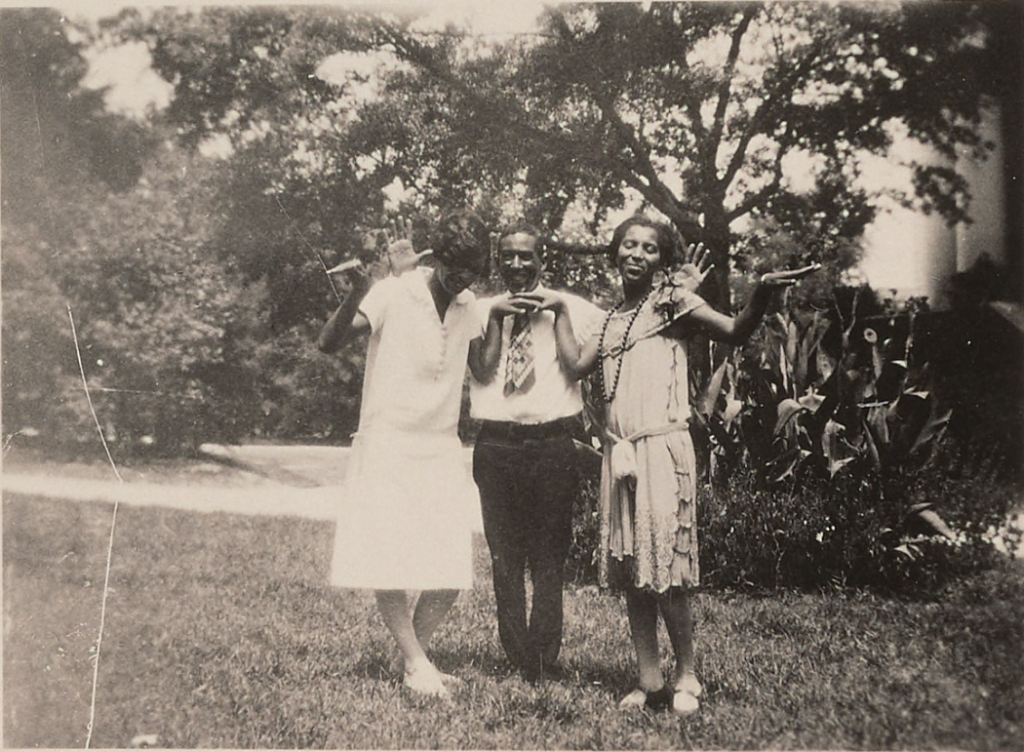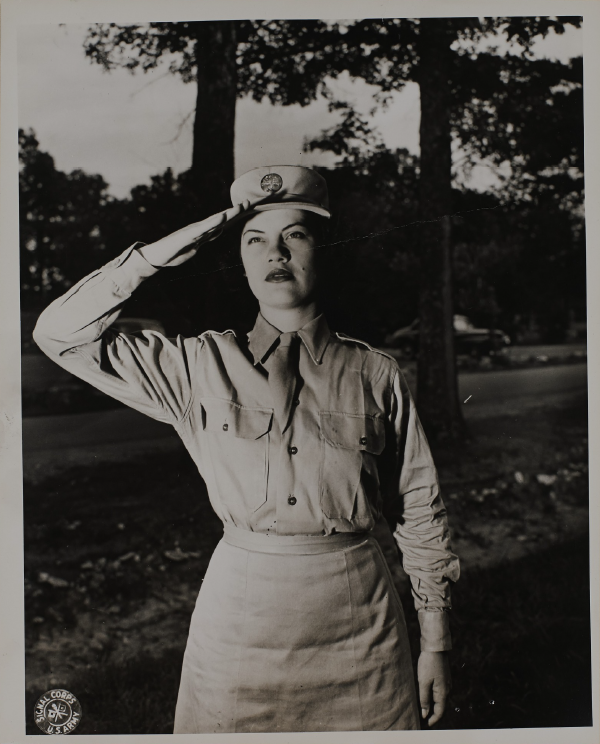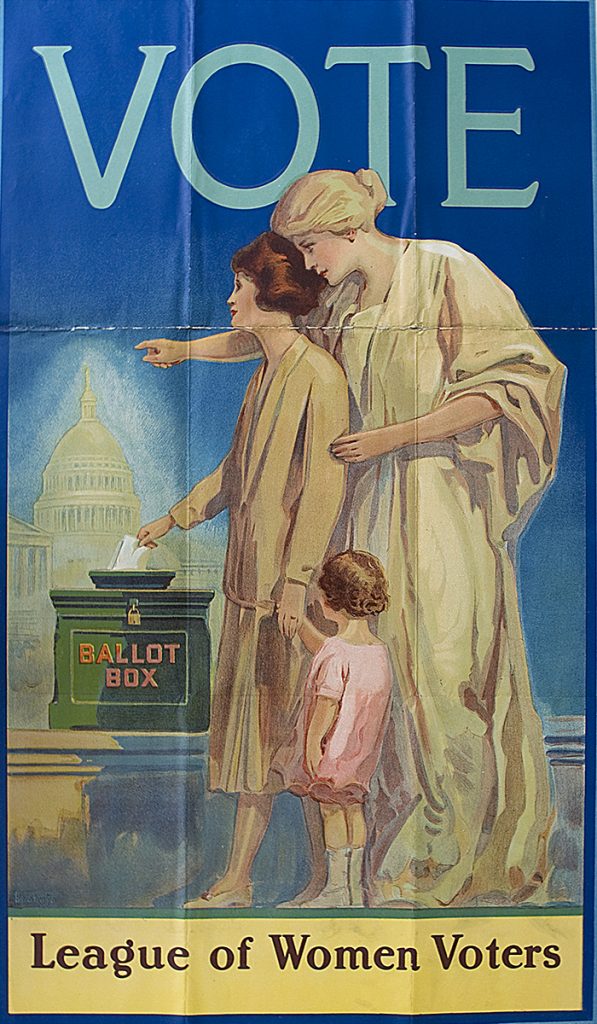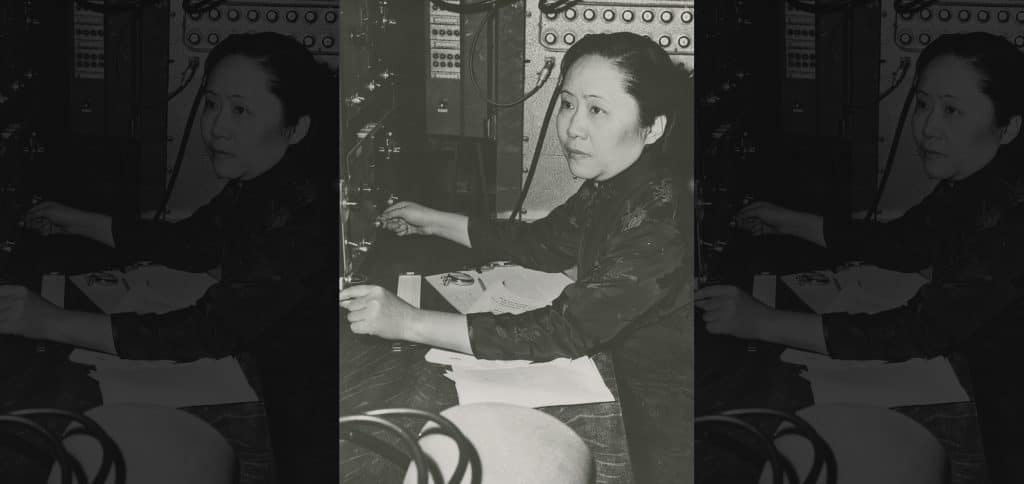Key Ideas
1. Major social, economic, and political shifts in this period forced Americans to once again question what it meant to be an American.
2. Women of all backgrounds continued to feel the tension between traditional expectations of domesticity and expanding opportunities in work, education, social interaction, and politics.
3. After the passage of the Nineteenth Amendment, women activists lacked a unifying issue. Instead, they focused on an increasingly diverse array of social and political issues.
4. Although women’s experiences varied depending on age, race, ethnicity, geography, and economic status, women across all these categories actively contributed to reform and activated their citizenship in creative ways throughout the era.
Introduction
The period of American history between 1920 and 1948 is often talked about – and taught – as a three-decade period made up of distinct chapters.
With the 1920s came a creativity boom, a new jazz culture, and youth pushing the boundaries of “proper” behavior. The conversation shifted dramatically in the Great Depression of the 1930s with breadlines, unemployment offices, and a growing federal bureaucracy. World War II in the 1940s pushed Americans out of their comfort zones as it took over every aspect of daily life. It was quickly followed by a post-war period, during which America expanded its influence around the world and reflected on its national ideals.

Unidentified Woman With Langston Hughes and Zora Neale Hurston, 1927. Yale University Library, Beinecke Rare Book and Manuscript Library.
But this step-by-step narrative overlooks the complexity and diversity of the American experience. In reality, the 1920s, 30s, and 40s were a mix of confidence and crisis. As Americans faced incredible social, political, and economic challenges, they redefined what it meant to be American yet again. Jim Crow racism inspired an outpouring of creativity in Harlem and beyond. Ongoing colonization of indigenous communities resulted in native-led activism. Progressive Era social reform inspired a new generation of militant workers, leaders, and housewives. New government programs offered people of different races, abilities, and backgrounds the chance to shape national policy. Wartime needs expanded access to places like factories, military bases, and laboratories.

“Grace Thorpe joins WAACS,” Military Career and Life in Japan, 1943-1946. Grace F. Thorpe Collection, National Museum of the American Indian.
Women were a part of all of this. This unit begins right after one of the most important moments in American women’s history: the ratification of the 19th Amendment. But universal suffrage was not – as many suffragists predicted – a cure-all solution for the restrictions women faced. Over the next three decades, women of diverse backgrounds worked hard to respond to rapid changes while advocating for a better position in society. They debated equality, created thought-provoking art, broke records, led protests, and maintained the home.

League of Women Voters poster, VCU Libraries Gallery.
Educators can navigate this unit in two ways: by section and by theme. The sections reflect the traditional approach to teaching this era with four chronological components: Jazz Age, Great Depression, World War II, and Post-War. The themes allow users to explore topics and resources across the three decades. Suggested activities within each resource and life story provide additional ways to jump across years and consider how women from the 1920s through the 1940s (and beyond) activated their citizenship, contributed to society, and shaped history in meaningful ways.
For more information about the aftermath of suffrage and women’s struggle to assert their new rights and embrace modernity, watch the video below.
This video is from “Women Have Always Worked,” a free massive open online course produced in collaboration with Columbia University.
Unit Essential Questions
1. What changed between the Progressive Era and the Jazz Age? To what extent were women’s lives different by the end of the 1920s? To what extent were they the same?
2. How did the national and international crises of the Great Depression and World War II impact women? To what extent did they have new opportunities amidst the crises? To what extent were their lives restricted more than usual?
3. How did the Post-War era reflect both the incredible changes that took place during the war and a return to traditional values?
4. How did Japanese American women experience the war? How does the history of Japanese American incarceration influence the greater narrative of World War II?
Explore by Section
To learn about these three decades by topic, explore the four sections below!
The Jazz Age
The Jazz Age was an era of creativity, consumerism, and youth culture. While it seemingly provided exciting new opportunities for all, those opportunities looked different for different kinds of Americans.
Go NowThe Great Depression
The Great Depression was an all-encompassing crisis for Americans, but it did not destroy their spirit. Women found creative ways to not only survive, but also fight for a seat at the table.
Go NowWorld War II
America’s mass mobilization required women of all backgrounds to actively commit to fulfilling their patriotic duty on a daily basis.
Go NowPost-War
With war’s end, the reality of what it meant to be a women in the mid-20th century set in. But women did not easily forget the new opportunities the war provided.
Go NowFor more information and resources about World War II, see our curriculum guide World War II & NYC.
Explore by Theme
Explore resources related to common curricular topics and themes.
View All Resources
Discover all the resources in this unit below and click through to the sections to find even more background information.







